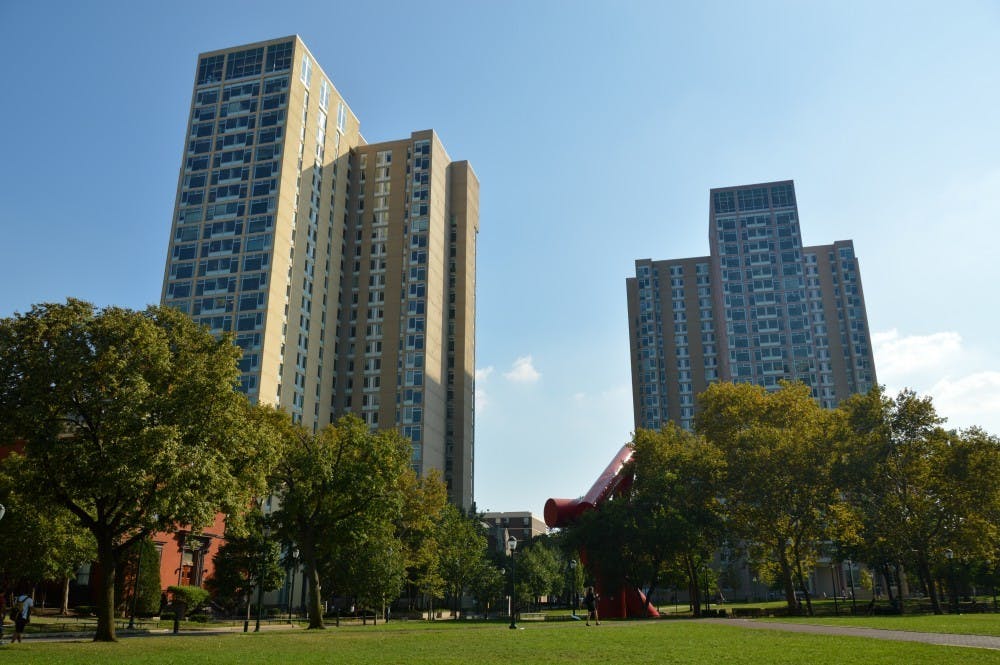
5:20 p.m. It was time. My prospective roommates and I huddled around my computer, anxiously awaiting the launch of our room selection application. We sped through the questions, and less than a minute after, our collective silence transformed into collective celebration. A huge weight had been lifted off our chest — we had acquired the room of our choice.
Penn Housing, especially within the past few months, has developed a somewhat poor reputation, due to an extensive case of mold in the Quad, recent floods in the high rises, the controversial second-year housing requirement, and a string of other mishaps. Students often complain, and rightly so, because Penn, indeed, has a long way to go in improving their housing situation. But, we must be aware that in comparison to many other colleges, Penn’s housing services are well above average.
Penn’s second-year housing requirement stirred strongly adverse responses, but if it had happened at fellow Ivy League school, Cornell University, there might have been the opposite reaction, where high demand for on-campus housing is met with low supply. Like Penn, upperclassmen at Cornell who wish to live on campus enter a housing lottery where time slots are assigned randomly. But students have described it as “Housing Hell” and the “Hunger Games” of room selection because preferred housing is never ensured, especially for students with later time slots. Thus, the lottery ensues fierce competition and intense anxiety.
While many Penn students embrace the opportunity to live off campus after freshman year, the situation is not always ideal at Cornell. With a limited number of on-campus beds, students must rely on off-campus housing, only to be met with excessively high prices. Those that are affordable lie on the outskirts of campus. Moreover, students living off campus are often met with unprecedented difficulties. In a specific case, one Cornell student abandoned his apartment, due to a months-long dispute with his landlord, and began sleeping in a library on campus.
Last August, new students at Purdue University were reported to be sleeping in segmented, office-like spaces, known as “temporary” or “auxiliary housing.” Created due to the excess of admitted applicants, a handful of new students spent their first few weeks of college in public arenas that house up to ten students. This form of housing, though only publicized this past summer through Buzzfeed Media, has been in practice at Purdue years before. In 2008, a female freshman remained in temporary housing 12 weeks into the semester, initially expecting it to last up to four weeks. In 2013, one student made a new home in a converted janitor’s closet.
Such housing is an anomaly at Penn, where every freshman from the start of New Student Orientation has a room, either suite-style or traditional dorm-style. Moving into upperclassmen years, students are provided with options of gaining a kitchen, living room, and private bathroom, while others who opt-out of on-campus housing pursue more affordable private housing nearby or luxury housing, such as The Radian and Domus. Students aren’t concerned with finding housing — they’re concerned with deciding on the best choice. We have the privilege of not worrying about whether we’ll have housing in future years, as Penn has subsided any possibility of a housing crisis.

File Photo
Unfortunately, at UC Berkeley, a school many of my friends from high school attend, a notorious housing crisis has existed for decades. On several occasions, they’ve lamented over their housing situation — a lack of security, little to no amenities, and high costs, both on and off campus. Compared to Penn’s minimum rate of $10,200 and maximum rate of $14,284, UC Berkeley’s prices range from $13,495 for a single room housing four people up to $20,485 for a one-person single room suite. On-campus housing is only guaranteed for about a quarter of undergraduate students, leaving some to resort to forms of homelessness. An official housing survey conducted in 2017 found that at some point since arriving to the university, 10 percent of respondents had experienced homelessness by not having stable or reliable housing, causing them to live in vehicles, short-term rentals, couch surf in other people’s homes, or make other sleeping arrangements.
On the other hand, students at Penn complain about minor details. I, for one, have worried about whether my room would be above the tenth floor, whether it’d have a large window in the living room to view the Philadelphia cityscape, and whether it’d be within a one mile radius to the closest Starbucks. I understand that everyone’s process varies, and I sympathize with fellow students who may be struggling with severe difficulties related to room selection. But, at the end of the day, those of us pursuing housing, either on or off campus, typically end up in perfectly comfortable situations.
As room selection nears to an end, let’s look past our trivial concerns and keep in mind how lucky we are to have viable and relatively affordable options. Allow room selection to be a time free from discontent and, instead, full of excitement.

CHRISTY QIU is a College freshman from Arcadia, Calif. studying architecture. Her email address is christyq@sas.upenn.edu.
The Daily Pennsylvanian is an independent, student-run newspaper. Please consider making a donation to support the coverage that shapes the University. Your generosity ensures a future of strong journalism at Penn.
Donate






